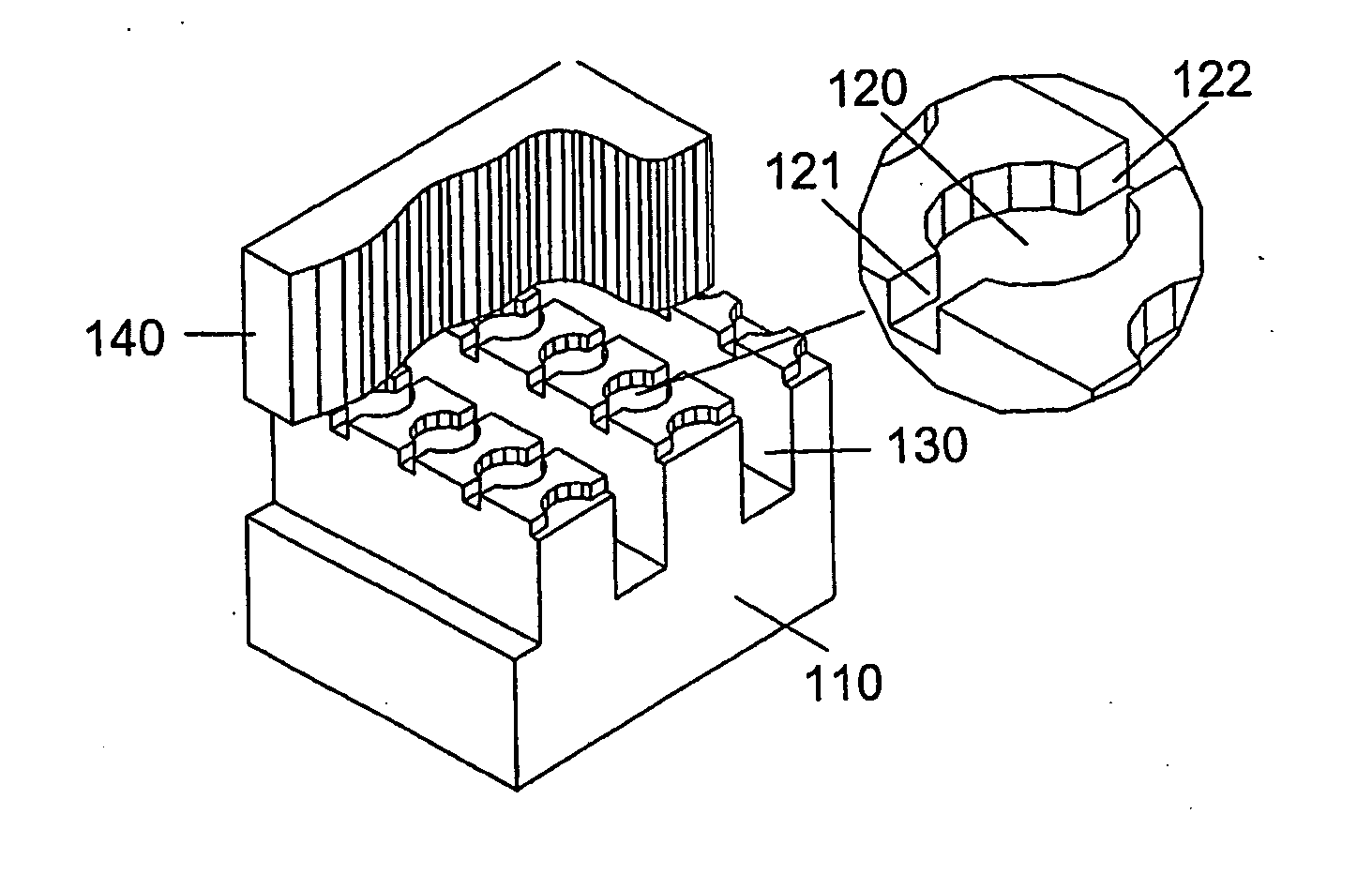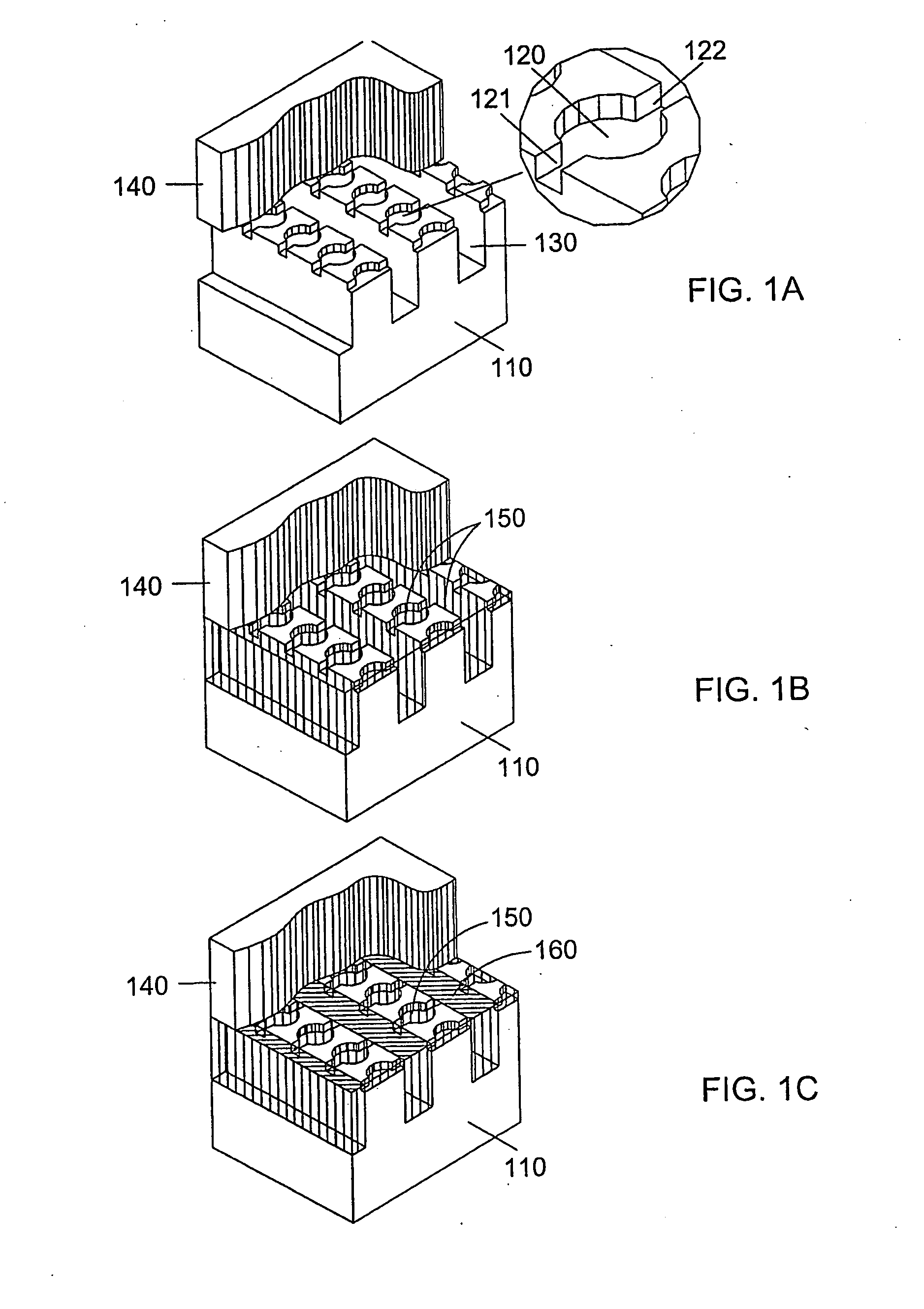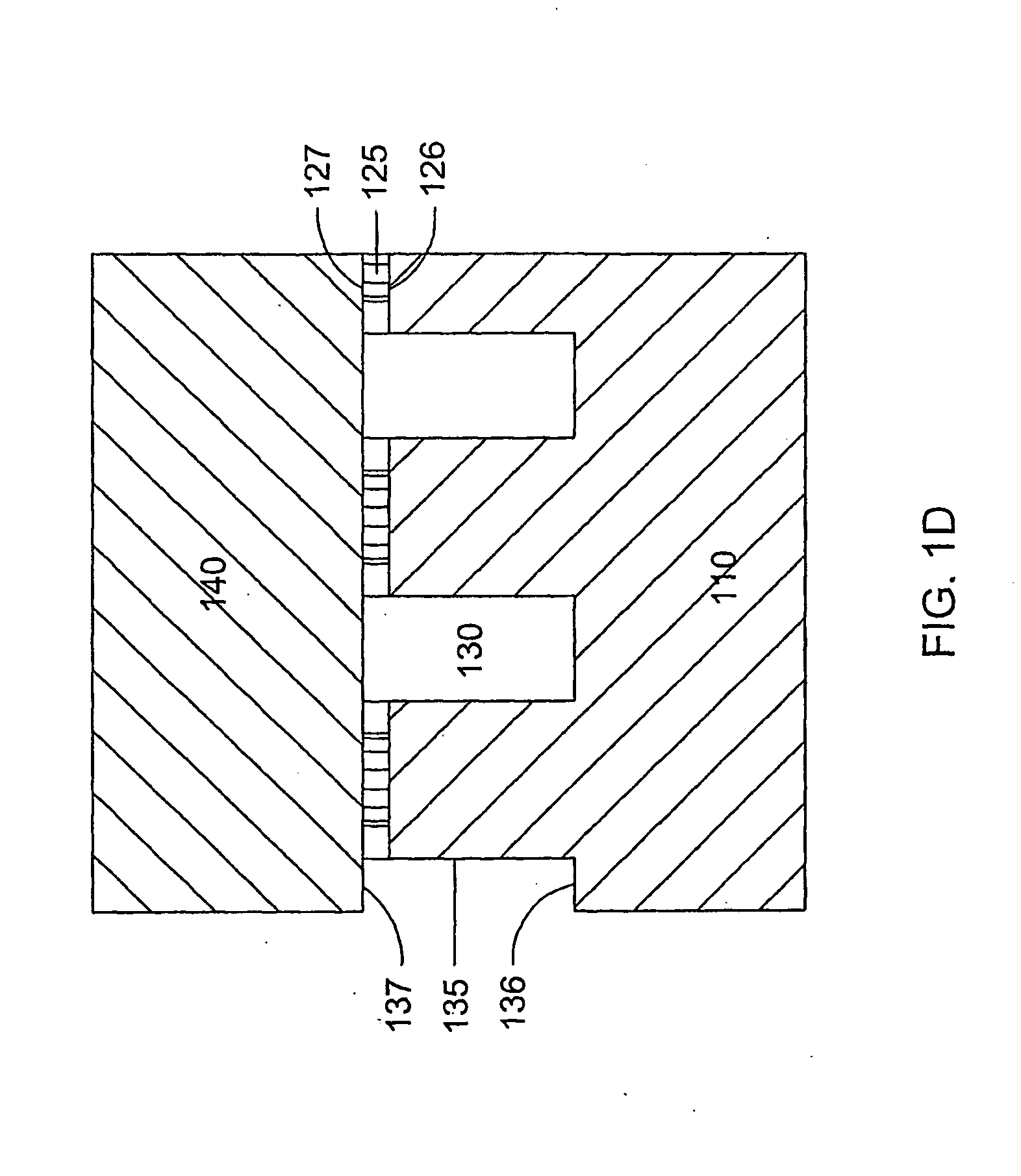Fluidic devices and methods for multiplex chemical and biochemical reactions
a technology of biochemical reactions and fluidic devices, which is applied in the field of fluidic devices for carrying out multiplex chemical or biochemical reactions and performing multiplex chemical and/or biochemical assays, can solve the problems of inadequate assay specificity, inability to meet the needs of many applications, and inability to meet the needs of multiple applications
- Summary
- Abstract
- Description
- Claims
- Application Information
AI Technical Summary
Benefits of technology
Problems solved by technology
Method used
Image
Examples
example 1
Isolation of Chambers
[0161]A microfluidic array device is fabricated using a 500-μm thick silicon wafer as a fluidic template and a 500-μm thick glass wafer as a cover plate. Fluidic structures are similar to that of FIG. 2A. The structures include 20×6=120 circular-shaped chambers of 100 μm diameter and 15 μm deep. The inlet and outlet conduits are 12 μm wide, 15 μm deep and 40 μm long. Seven tapered transport channels are 2,400 μm long, 150 μm deep, and have a taper width ramping down from 75 μm to 72 μm. Bypass channels are 39 μm wide, 150 μm deep and 310 μm long. The fluidic structures were formed using DRIE (Surface Technology Systems plc, Newport, UK) etched. The interior surfaces of the chambers are oxidation-formed silicon dioxide on the silicon substrate side and glass surface on the glass cover side. The interior surfaces of the channels of both silicon and glass sides were coated with perfluorocarbon monolayer formed by selective coating of the surfaces with 0.5% (heptade...
example 2
PCR using RNase A Cleaved Oligo Primers
[0163]PCR reactions were carried out using on a MJ Research PTC-225 Peltier Thermal Cycler and in 25 μL volumes. JumpStart Taq polymerase and a companion buffer solution (Sigma-Aldrich, St. Louis, Mo., USA) were used for the PCR reactions. In the buffer solution, 200 μM dNTP, 2.5 mM MgCl2 (divalent cation), and 0.05% BSA were added. A 78-mer oligo DNA of 1 pg, with the sequence showing in the following, was used as a template.
#4126AGCATAGGATCCGCGATGAGCGATCGCATGACAACGAGCTAAGTCCAGCGATCGCAGCTGGTTTTTTGAATTCATGCGT
[0164]A composite primer that contains two rU sites and a sequence showing in the following was used. The concentration used was 2 μM.
#4148GACCACGAGCATAGGATCCG(rU)CTCGTCCGACGCATGAATTC(rU)TTTTTTTTTT
[0165]The above components were added to all PCR tubes.
[0166]The temperature program was following: 94° C. for 60 sec, 35×(94° C. for 30 sec, 55° C. for 30 sec, 72° C. for 60 sec), 72° C. for 60 sec, hold at 4° C.
[0167]To RNase A cleavage and PCR ...
PUM
| Property | Measurement | Unit |
|---|---|---|
| distances | aaaaa | aaaaa |
| distances | aaaaa | aaaaa |
| distances | aaaaa | aaaaa |
Abstract
Description
Claims
Application Information
 Login to View More
Login to View More - R&D
- Intellectual Property
- Life Sciences
- Materials
- Tech Scout
- Unparalleled Data Quality
- Higher Quality Content
- 60% Fewer Hallucinations
Browse by: Latest US Patents, China's latest patents, Technical Efficacy Thesaurus, Application Domain, Technology Topic, Popular Technical Reports.
© 2025 PatSnap. All rights reserved.Legal|Privacy policy|Modern Slavery Act Transparency Statement|Sitemap|About US| Contact US: help@patsnap.com



